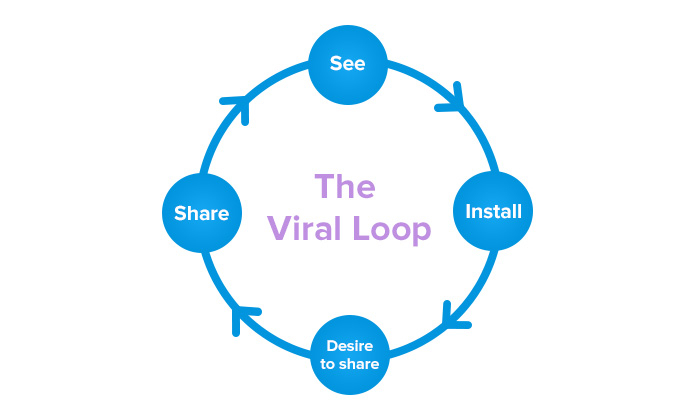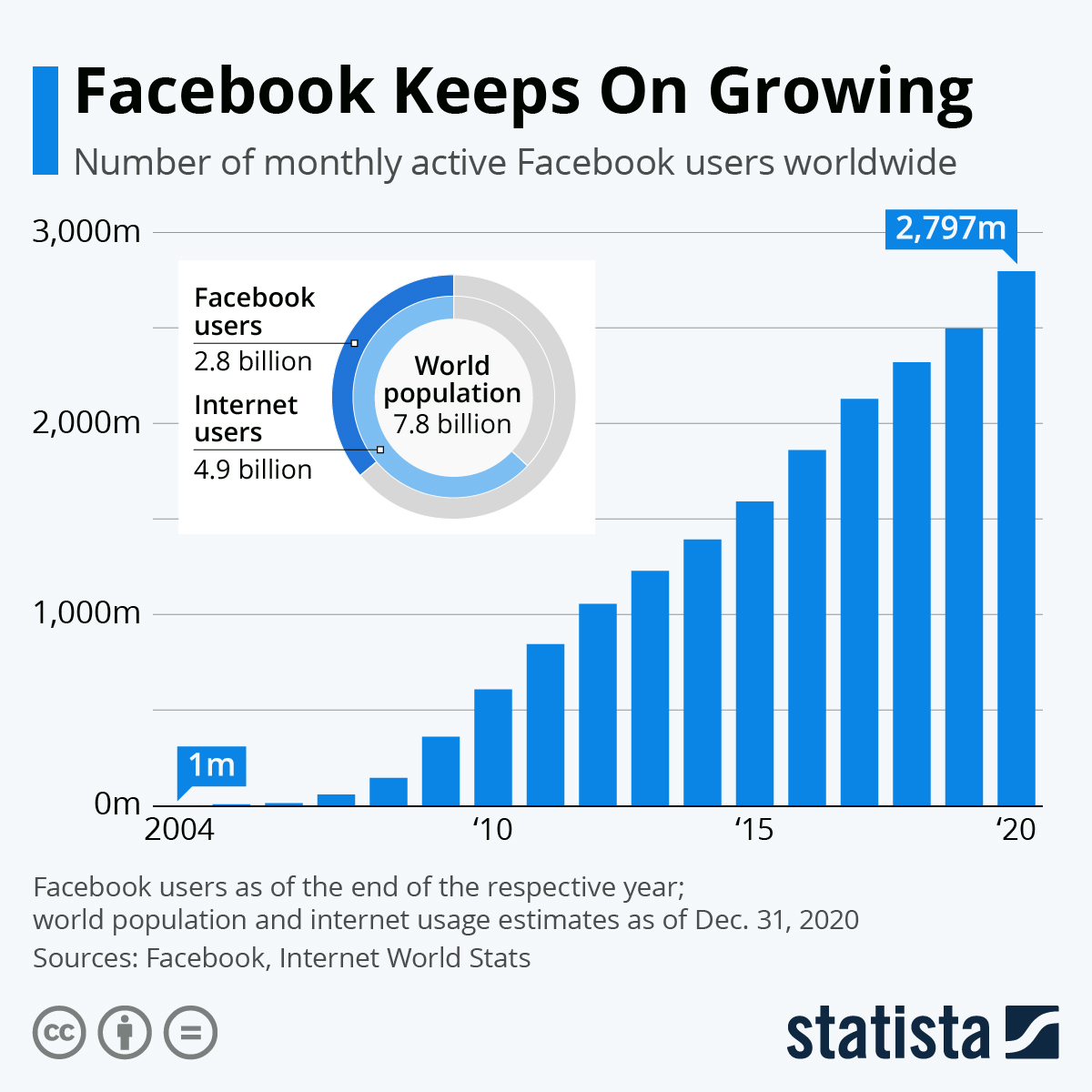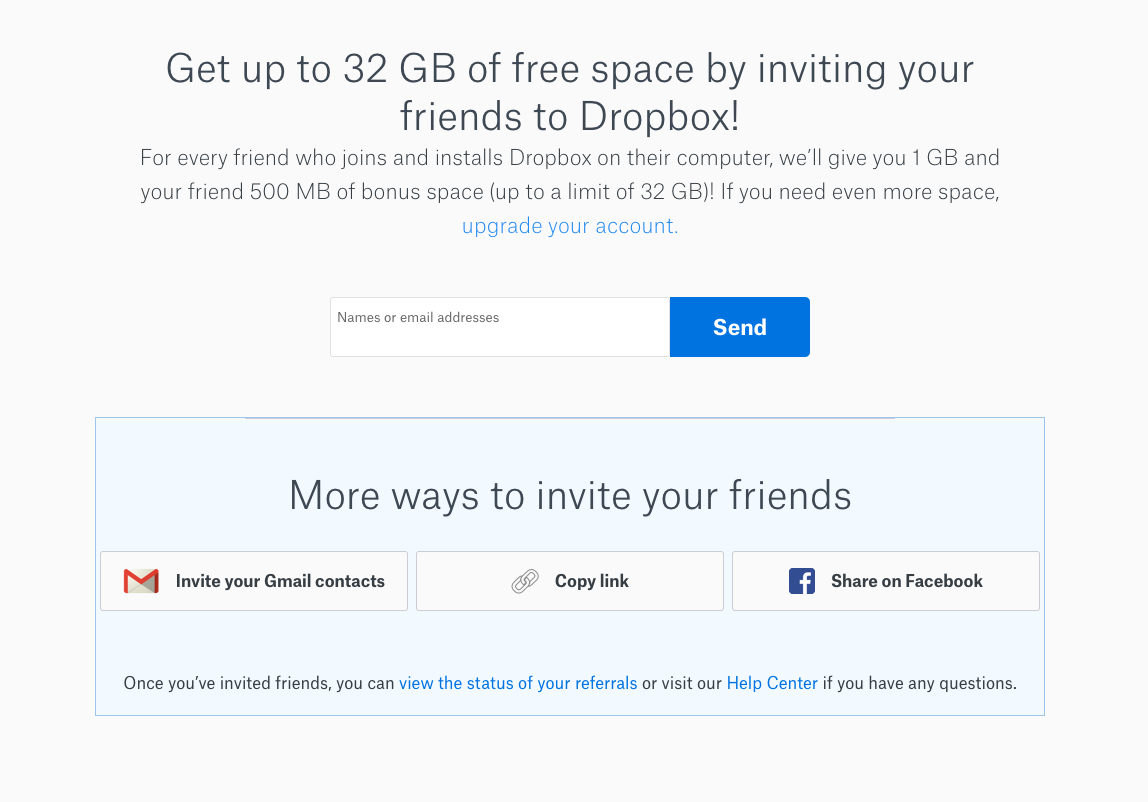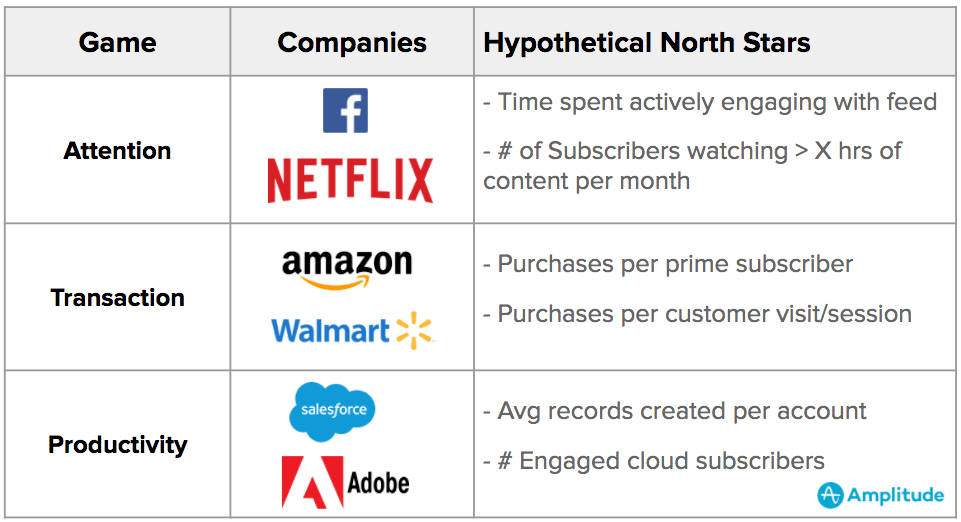Put your growth on autopilot
GrowSurf is modern referral program software that helps product and marketing teams launch an in-product customer referral program in days, not weeks. Start your free trial today.
Stop me if this sounds familiar: You came up with a brilliant product idea that you feel in your gut will catch on. You work with your team to bring that idea to life. You put it out in the wild and early adopters loved it (or so they say). Some of them even asked their friends to try it out. So far so good, right?
Fast forward to two months later and you find yourself still stuck with the same users. Except this time, they’re dropping off one by one until… *cue awkward cricket sounds*
What gives?
Here’s what gives: Your product doesn’t have a viral loop going for it.
You see, when it comes to releasing products, a viral loop is kind of a big deal. Otherwise, to get new customers, you may need to resort to cold outreach approaches to source new customers, like using LinkedIn automation tools and sending cold emails.
Want to know what a viral loop is and what it can do to help your products catch on with your target audience?
This blog post has your back. Dive in!
A viral loop is a mechanism that entices your existing users to refer your product to others.
Put another way, a viral loop helps you influence your existing users to introduce and promote your product to their friends, colleagues, family, and social network. If your existing users are falling over themselves to recommend your product to their friends and get them to install it, then your product has a strong viral loop going for it.
Isn’t that like word-of-mouth marketing?
Well, kinda? It’s more accurate to say they’re close cousins. Like word-of-mouth marketing, viral loops operate on trust. The difference with viral loops is they have “virality” built into the product itself.
In other words, you’re not just going by word-of-mouth. When creating a viral loop, you’re putting a mechanism in place to help your existing users spread the word about your company or product. This mechanism kickstarts the loop in motion, which can result in exponential viral growth.
A viral loop goes like this:
1. A new user uses your product, likes it, and keeps using it.
2. You offer that user an incentive in exchange for referrals.
3. Finding value in the incentive offer, the user sends invites to others.
4. User’s friends receive the invites.
5. User’s friends accept the invites, become new users.
6. Go back to step 1, and the cycle continues (it’s called a “loop,” after all.)

[Source: Apptamin ]
Dropbox is a great example (an overused one, in fact). If you’ve been using the internet long enough, chances are you’ve accepted a Dropbox invite from a friend and sent some invites yourself. After all, who doesn’t want free storage space?
Viral loops are especially effective for social media platforms. Why did Facebook blow up in its early days? Because of a strong viral loop, that’s what. The moment you sign up for a Facebook account, the most logical thing to do is to send out friend invites. And why not, considering the social networking platform would be pointless if you don’t connect with your friends? Facebook referrals were the company's growth lever for elevating themselves from startup to global social behemoth.
To have a better appreciation of how viral loops work, let’s go over its advantages.
When it comes to getting highly-qualified leads, viral loops deliver the goods.
Want proof?
According to a
Social Media Today
report, marketers rate referrals as the 2nd highest source of quality leads. That same study shows that 78% of B2B marketers claim that referral programs generate good or excellent leads.
No surprise there, really. When you offer an incentive that interests users, they’re more likely to refer your product to friends whom they think will also find the product useful.
Let’s say you’re using Evernote and want to take advantage of the company’s referral program to earn the points you need to enjoy some of the software’s premium features. If you have one invite left, to whom would you send that invite? Your journalist pal who spends most of her day writing essays and reports or your dear grandma?
We’re pretty sure you’d choose the former (and we’re also sure Evernote would prefer that, too).
Let’s face it—
consumers don’t trust businesses
as much as they used to. You can get creative with your ads, but if potential users don’t know you, they aren’t likely to give you the time of day. You can spend more on ads until you earn their trust, but that won’t exactly bode well for your bottom line.
So, here’s an idea: Instead of spending all your marketing budget on ads, why not create a viral loop and enable your existing users to do the marketing for you?
After all, according to Nielsen , 92% of consumers worldwide trust recommendations from friends and family more than other forms of advertising.
In other words, if you want your target users to trust you more, give your existing users a good reason to vouch for you. You can do that with viral loops, which will significantly reduce your customer acquisition costs.
Meaningful (and profitable) relationships are built on trust This is even more true now that trust in businesses is at an all-time low.
With viral loops, you get a distinct advantage because you have real people vouching for your products and services. When you combine that trust with a great product and a solid referral system, the viral loop that is set into motion can create a snowball effect that leads to exponential growth.
Want to see what exponential growth looks like over more than a decade? Here’s a visual representation of Facebook’s monthly active users from 2004 until 2020.

[Image source:statista]
If you want to create a viral loop that will drive growth for your product, offering the right incentives is key. Here are the types of viral loops you can choose from (bear in mind that they can overlap each other in certain situations… which is okay):
The basic viral loop uses a simple premise to drive viral growth: to entice your existing users to share your product with their friends, offer them an incentive that allows them to get more of it. Dropbox is a classic example of a basic viral loop. To get more of Dropbox, just send your friends a Dropbox invite and you’ll get free storage in return.

Value-driven viral loops are two-sided in such a way where each referral provides value to both the referrer and the recipient. This is effective for two obvious reasons. First, when your incentive offers value to the recipient, you increase the likelihood that the invite will be accepted. Second, your existing users will be more inclined to send invites knowing they’re giving their friends a favor. It’s a win-win situation for both!
As the term implies, a savings-driven viral loop drives viral growth by offering users an incentive that helps them save money, usually in the form of a coupon or a promo code. Shoeboxed’s referral program, for example, offers users a 10% discount off their monthly payment for every successful referral (the recipient also receives a 10% discount, which also makes it a value-driven viral loop).
This works by offering users the opportunity to give back to the community in exchange for referrals. Amazon’s online pharmacy Pillpack, for example, donates $100 to the nonprofit RxArt organization for each successful referral.
Can’t decide which viral loop to use for your product campaign? To arrive at an informed decision, you need to take stock of the many elements that go into a viral loop to make it successful. Also, asking the right questions will help.
It’s one thing to create a viral loop for your product, but it’s quite another to create one that will grow your business. Here are steps (or best practices, if you will) you can take to ensure the success of your viral loop.
When creating an effective viral loop, it’s less about the number of users you have and more about whether or not they love your product. Where exactly are they on a scale from “nice-to-have” to “must-have”?
To find out, don’t rely on the number of downloads or revenue alone. To have a better idea of how much your users love your product, and by extension how eager they will be to refer your product to others, you need to find the right data and dig deeper.
You need to determine your users’ level of engagement and find ways to boost that engagement. To do that, you must use data analytics to your advantage. Paid product intelligence tools like
Amplitude
,
Trendalytics
, and
Localytics
can give you access to user data and generate insights that will help you enhance product experiences.
But which metrics or KPIs should I track?
Now you don’t need to keep track of every user data that pops up on your product dashboard. That’s your one-way-ticket to analysis paralysis. To accelerate growth, you need to focus on what Sean Ellis of Hacking Growth calls the ‘North Star Metric.’
The
‘North Star Metric’
is the one metric that has the most bearing on your company or product’s long-term success. It’s also that one most important metric that will have a positive impact on user retention.
To determine your ‘North Star Metric’ you must define the core value of your product and then identify the supporting KPIs that contribute to or enhance that core value.

[Source: Amplitude ]
With your ‘North Stars’ established, you can use your KPIs as benchmarks when making changes that will enhance the product experience. You won’t get it right the first time, but by deploying surveys, interviews, A/B testing, you’ll know what changes you need to carry out to make your users love your product. Once you’ve aced the key KPIs of your product, you’re in a perfect position to put in place a referral program that can create a strong basis for a viral loop your willing users can’t get out of!
To keep the referrals coming, make sure you’re providing your potential users with a straight path towards conversion (becoming a user) and brand advocacy (becoming a referrer).
To create a user journey that is personalized, frictionless, and uncomplicated, you need to have a granular understanding of how your users interact with your product. Visualization helps. To that end, you’d do well to use a referral funnel.
Here’s what a typical referral funnel looks like:

[Source: Paldesk ]
As you can see from the above image, a potential user has to go through specific stages in their user journey, from acquisition to referrals to advocacy.
The goal here, of course, is to minimize possible leaks in your referral funnel. This means making sure your prospects don’t have to go through multiple hoops to get to where they want to go. And you better make sure they understand the value they will be receiving when taking the next action. To minimize drop-offs, do some funnel analysis and use the insights you’ve gained to make the necessary tweaks that will increase conversions and referrals.
So, you’ve decided on a viral loop strategy? Great! With that said, you want to make sure the amount of referrals it’s bringing you justifies the cost of your incentives, or whether it’s going to sustain itself in the long run.
To arrive at a definitive answer, you need to calculate your Viral Coefficient (or K-factor).
The Viral Coefficient, simply put, is the average number of new users your existing users can acquire over their lifetime as a customer/client.
So, if your average user is generating an average of two users through referrals over their customer lifecycle, you get a viral coefficient of 2.
Now let’s get to the fun stuff.
The formula for calculating your Viral Coefficient is:
VC = C X R X CR
where:
C = Number of customers
R = Average number of referrals per customer
CR = Average conversion rate for referrals
Let’s break it down into specific steps:
A Viral Coefficient of 1 is actually a good number (at least according to general consensus). Meanwhile, a Viral Coefficient greater than 1 indicates exponential growth. Many say that a k-factor that is less than 1 is bound for failure. However, this isn’t necessarily true for all products, specifically for those that have longer sales cycles where it usually takes more referral invites to get a potential user to sign up.
That said, in most cases, a Viral Coefficient that’s less than 1 means you need to perform some tweaks with your viral loop. Look at the values in the formula again and determine what you need to work on. Are you not acquiring enough users? Does your conversion rate need a boost? Do you need to offer a more attractive incentive to increase your referrals?
You want to make sure any changes you make will have some bearing on the results. As already mentioned, do some funnel analysis and then check if the most important metric (your North Star Metric, remember?) is being met in every stage of the funnel.
Once you do all of the above, you’ll be able to glean invaluable insights to help you make the changes that will give your Viral Coefficient a boost.
At the end of the day, sustainable growth is based on trust. Promote your brand or product in ways that diminish that trust and you’ve already lost the game. Remember, in today’s increasingly overcrowded market, trust is your most prized asset. Once you earn it, you have to nurture it like you would a dear friend. If you want your viral loop to be successful, don’t make it generate growth for its own sake. A viral loop that drives sustainable growth should empower your users in ways that allow them to take ownership of their experience with your product.
GrowSurf is a powerful and simple referral software that lets you easily build a viral loop into your product or newsletter. See why top tech and media companies, startups, and marketers choose GrowSurf by signing up for a 14-day free trial here.
🎯 True mastery of viral marketing is getting your audience to do the work for you.
— Chris Tweten 🍁 (@ctwtn) June 16, 2021
Here are 6 ways you can build virality into your product design! 👇 pic.twitter.com/tkg1OzS3WL

GrowSurf is modern referral program software that helps product and marketing teams launch an in-product customer referral program in days, not weeks. Start your free trial today.
Inside a winning SaaS content strategy. In this blog we cover everything you need to know about content brainstorming, scaling production and promotion.
Feeling short on time managing your referral program? Learn how to automate your referral marketing program that scales with your business needs.
SaaS referral programs are one of the most cost-efficient ways for startups to gain new signups and paying customers. Here's 5 reasons why and examples to study
What do Tesla, Airbnb and World of Warcraft have in common? They ran some of the best referral programs of all time! Here's what you can learn from them.
The easiest way to make a product go viral? Build it with a viral design. Learn the 6 best ways to incorporate virality into product design.
Word of mouth marketing can be the strategy that skyrockets your business and takes it to another level. Here we tell you all you need to know about it.